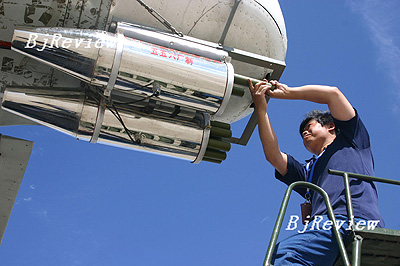Zhang Yimou, Chief Director of the opening and closing ceremonies of the Beijing Olympics, is a worried man. His concern is the weather, and how it will be on August 8 when the Games begin. His worst fear is heavy rain that could wash out the whole event.
Analysis of Beijing's meteorological data from the last 30 years might provide Zhang with some confidence. The probability of extreme weather conditions such as heavy rainfall in August is very small. It has happened only once in the past 30 years.

However, no heavy rain does not mean no rain at all. Data provided by Beijing's Weather Manipulation Office might make Zhang Yimou more anxious: The probability of rainfall on August 8, according to historical data, is 47 percent.
The date for the opening ceremony of Beijing Olympics was originally set on July 25, but the period from that day to August 10 is the main wet season of Beijing, and the concentration period of "sauna days" (high temperature and humidity). Therefore, after winning the bid to host the Olympic Games, Beijing raised the idea of postponing the event for one to five weeks. Finally the International Olympic Committee (IOC) set the date of opening ceremony as August 8.
After that, meteorological institutions of Beijing helped relative departments to arrange the competition schedule according to the weather conditions, in order to ensure that everything runs smoothly.
Beijing has also conducted experimental research on artificial hail suppression and rain elimination. "At present, Beijing has relatively advanced technology for artificially influencing weather conditions," revealed Zhang Qiang, Deputy Director of the Weather Manipulation Office. Based on domestic and foreign experimental results in this field, Beijing can better control small-scale and weak rainfall using artificial rain elimination technology. "That is to say, small or moderate rain can be eliminated artificially," said Zhang.
According to Wang Yubin, Associate Engineer in Chief of the Beijing Meteorological Bureau, there are several ways to influence weather conditions artificially, one of which is to adjust rainfall mechanisms by adding a catalyst to the clouds to stop rain. Another is to make the clouds rain in advance. "There are many very important factors in the implementation of the two methods," said Wang.